Written by Lily Haines, Communications Director at the Perry Institute for Marine Science
Widely deemed the “deadliest immediate threat to Caribbean coral reefs,” Stony Coral Tissue Loss Disease (SCTLD) is sweeping through The Bahamas’ crystal-blue waters like a forest fire. Its latest victim? The Exuma Cays Land and Sea Park (ECLSP). This summer, the disease popped up in the northern region of the ECLSP – the world’s first-ever land and sea park established more than 50 years ago as a beacon of Bahamian leadership on the global conservation stage.
“My first dive in the Exumas was years ago… I was blown away by the intact underwater kingdom that exists in our backyard. It is an untouched wilderness people dream of, visit, and travel the world to study,” shared Dr. Krista Sherman, Eleuthera-based senior scientist at the Perry Institute for Marine Science (PIMS). “The fact that SCTLD is in the Exumas, the crown jewel of our nation, should gravely concern and inspire all Bahamians to act as one in this fight.”
Sadly, the disease has spread to eight Family Islands outside of the Exumas as well, leaving behind trails of dead corals and non-functioning reefs that will inevitably have dire consequences for tourism and the economy. Imagine coral reefs once teeming with color and life crumbling into nothing but white, algae dominated graveyards in a matter of months. That’s what we’re up against. Unless we continue to address this ocean pandemic rigorously, collaboratively and with innovative science-backed methods and technologies, The Bahamas will lose the majority of its reef-building corals in less than five years.
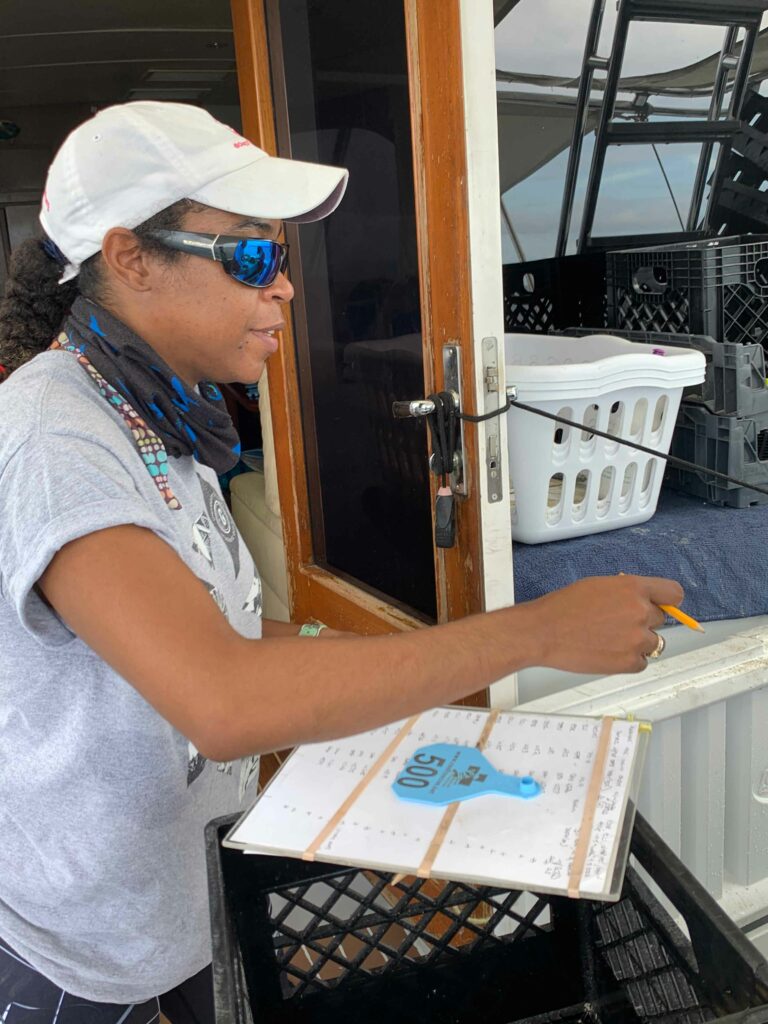
Island-by-island update
In March of this year, our team at the Perry Institute was first given authorization by the government to survey reefs for SCTLD and treat sick corals with life-saving antibiotics. In the days since that time and thanks to our incredible partners such as the Atlantis Blue Project Foundation, we have been able to diagnose, track and treat the disease across seven island areas: Northern Exumas, Grand Bahama, San Salvador, Eleuthera, Abaco, New Providence and Rose Island and Andros. But the spread of SCTLD isn’t slowing down anytime soon and it was recently reported offshore of even more islands, including Long Island and the Berry Islands.
This is what we know so far:
Northern Exumas: As mentioned above, the disease reached the Exuma Cays Land and Sea Park over the summer. Besides surveys, we treated corals within a few sites inside the park, where the disease was starting. Though further assessments are needed, treating corals within the oldest land and sea park of the Bahamas National Protected Area System should be of utmost priority moving forward.
Grand Bahama: SCTLD was first spotted in The Bahamas in 2019, on reefs off Grand Bahama near the shipping port. Since then, it has spread along most of the southern coast of the island. We also observed the disease on brain corals between Little Harbour Cay and Sweetings Cay.
San Salvador: San Salvador’s reefs have been devastated by the disease – nearly all reefs around the island are badly infected. Three coral species that were once commonly found on coral reefs have now been completely killed by SCTLD. In order to save the Prime Minister’s constituency from total ecosystem collapse we must continue to treat these areas aggressively and undertake studies to better understand disease spread and prevention.
Eleuthera: The disease continues to spread along the east coast of Eleuthera. It recently reached John Miller’s Blue Hole, a renowned dive site and tourism hot spot.
Abaco: Last year, SCTLD was spotted in Fowl Cays National Park; now it’s spread to Great Guana Cay (center) and south of Man-O-War cay.
New Providence and Rose Island: Currently the only healthy reefs in this region are those located south of Rose Island. Treatment continues in specific reef areas and targets highly vulnerable species to avoid local extinction.
South Andros: SCTLD was spotted in Kemps Bay reefs (July 2022). Further assessments are necessary to estimate the spread of the disease in this island and start treating key coral species as soon as possible.
Long Island: All reefs located on the eastern coast of Long Island are being affected by the disease. Along the western coastline, the disease is present in most reefs as well.
Berry Islands: Reefs around Great Shrimp Cay are actively infected with SCTLD. Further assessments are necessary to determine the spread of the disease in other cays.
Though current SCTLD treatment interventions are helping and scientifically sound, as with human medicine, deeper analytical scientific research is necessary in order turn the tide on the Caribbean’s SCTLD pandemic, and indeed search for a “moon shot” reef cure. Unfortunately, bureaucratic challenges created by ongoing Government policy allow for coral treatment in The Bahamas at small scales, but stifle critical scientific innovation and discovery needed in the face of this international crisis.
Meghyn Fountain, a Perry Institute coral researcher and SCTLD fighter said, “If permits for more disease-focused research are granted, we The Bahamas could finally step up to the plate as the world leaders we are in the fight against SCTLD. This would give us a chance to discover new treatments, pave the way for a global solution, and actually eradicate this pandemic once and for all.”
Indeed, since SCTLD was first discovered off Florida in 2014, it has spread to more than 20 countries throughout the Caribbean. Of the 45 reef-building coral species within the region, more than half can catch the disease, including some of the slowest-growing and longest-lived species like brain, pillar and star corals. The disease, which travels at astonishing speeds of up to 50 metres each day, knows no territorial boundaries, making regional cooperation absolutely critical to stopping its spread.
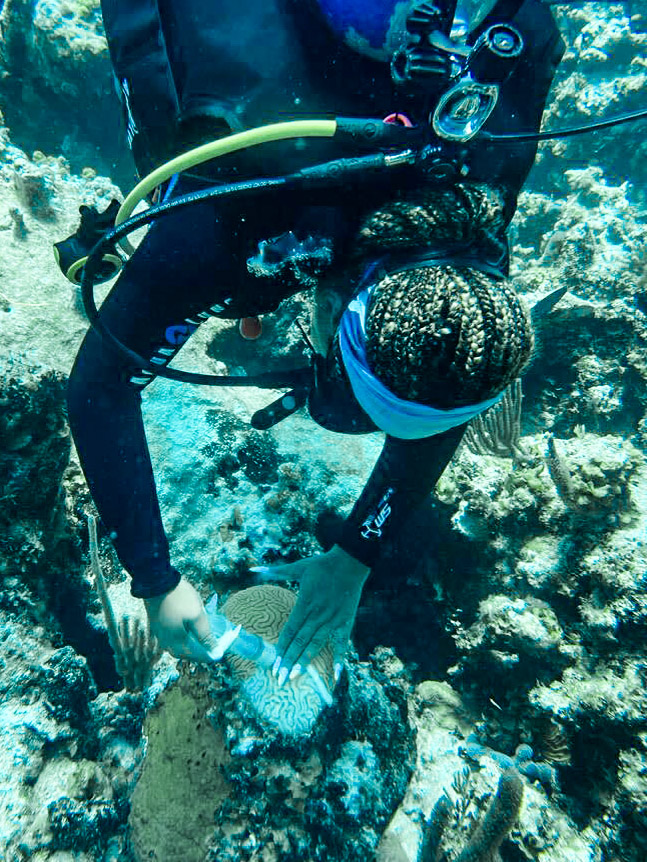
Curing corals, together
Although the exact cause of SCTLD is unknown, it is waterborne and can be easily spread through contact. This means that whether you’re a diver, boater, fisher, tourist or ocean-lover, we each have a responsibility to take action and stop it’s spread while we’re on the water.
Here’s how you can help:
1. First, learn to identify the disease. If you think you see SCTLD while snorkeling, fishing or diving in The Bahamas, snap a picture, record the location, and report it to a local conservation group. This helps us monitor the spread between reefs and among islands.
2. Don’t be the reason the disease is spread between reefs! If you are going scuba diving, fishing or snorkeling in the Caribbean, please disinfect your gear before traveling to a new site (see poster below).
3. If you’re a boat driver, be careful to not carry any water between reefs. Be sure to pump out any bilge water at reefs where SCTLD is present and disinfect any remaining bilge water before releasing it into open water. Bilge water can be disinfected by adding 1 cup of natural detergent (i.e., sodium percarbonate) to every 5 gallons of water. Be sure to let it soak for at least 10 minutes.
Let’s slow the spread of SCTLD in The Bahamas and discover its root cause… together!
This is a project of the Atlantis Blue Project Foundation.
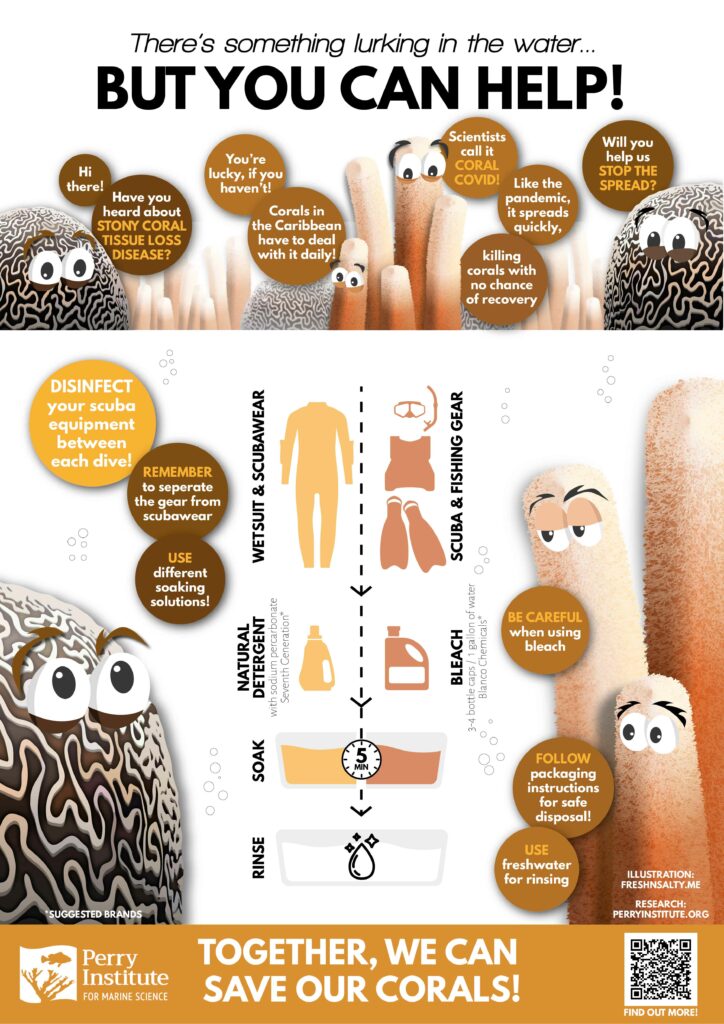
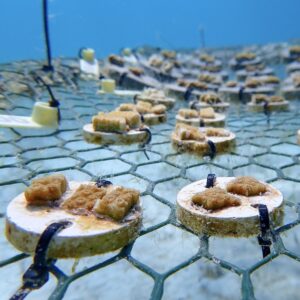
What If Saving an Entire Reef Started With a Single Coral Fragment?
Through the Reef Rescue Network (RRN) in partnership with Atlantis–Paradise Island and the Atlantis Blue Project Foundation, that’s exactly what’s happening—every day, in The Bahamas.
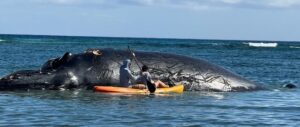
Rescue, Research, and Recovery: Humpback Whale Stranding in The Bahamas
When Tragedy Sparks Action: A Humpback Whale Stranding in Eleuthera In February 2025, our commitment to marine mammal conservation in The Bahamas was put to

The Lifeline of Coral Reefs: How Gene Banks Help Save Endangered Corals
In the clear, warm waters of The Bahamas, corals form vibrant underwater ecosystems essential to marine life, local economies, and coastal resilience. However, coral reefs
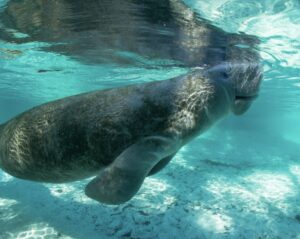
Rare Manatee Sighting in Nassau Highlights Urgent Need for Conservation Awareness
On September 25, 2024, a rare and captivating sighting occurred at Bay Shore Marina in Nassau—a manatee was spotted casually drinking fresh water from a
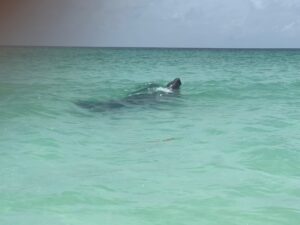
Community Efforts Drive Marine Mammal Conservation in The Bahamas
In late July 2024, The Bahamas Marine Mammal Research Organisation (BMMRO) was alerted to a tragic discovery in the waters north of Bahama Palm Shores,
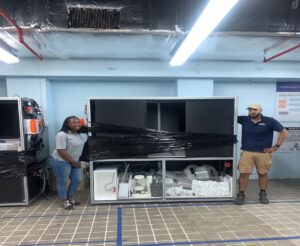
Bahamas Coral Gene Bank Equipment Arrives at Atlantis Resort
We are thrilled to announce that The Bahamas Coral Gene Bank at Atlantis, Paradise Island has received two 40-foot containers packed with essential lab equipment

